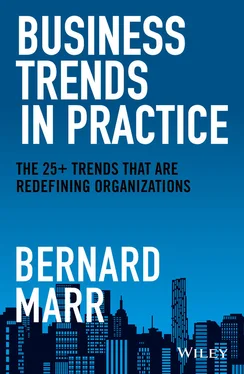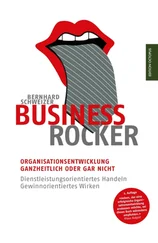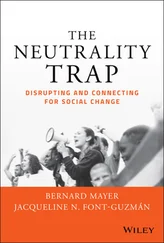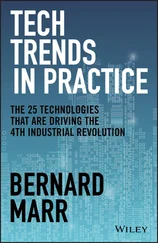Given that the human body contains around 37 trillion cells, the microscopic scale involved in gene editing is truly amazing. The cell's nucleus, where most DNA resides, makes up around 10 percent of a typical cell, so the level of accuracy needed to cut something that tiny is almost inconceivable. At present, the CRISPR (pronounced “crisper”) method of gene editing shows the most promise; it's the simplest way of making precise changes to DNA, such as adding some traits and/or removing others, not unlike the “find and replace” function in Microsoft Word. The CRISPR method was controversially used by Chinese scientist He Jiankui to alter the DNA in the embryos of twin girls to prevent them catching HIV. 13 Gene editing like this is banned in most countries and the experiment was widely condemned.
But we're not just talking about editing human DNA here. Plant health can be improved with gene editing. By editing plant genomes, their resistance to pests and diseases can be increased, leading to higher yields and less dependence on harmful chemicals. For example, researchers at Penn State University are working on creating genetically enhanced cacao trees that will be resistant to the disease and fungus that destroys up to 30 percent of the worldwide cacao crop before their pods can be harvested. 14 Creating disease-resistant crops like this will play a vital role in feeding our planet in future.
As well as editing genes, it is also possible to synthesize an organism's entire genome. As early as 2002, scientists were able to create the polio virus from scratch by synthesizing its genome. This brings us on to the topic of synthetic biology – or the field of science that's devoted to redesigning organisms. Synthetic biology is similar to gene editing (the ability to read and edit genes lies at the heart of synthetic biology), but while gene editing tools can be used to make small changes to DNA, synthetic biology can involve stitching together long strands of DNA and inserting them into an organism. As a result, the organism may behave differently, have new abilities, or be able to produce a specific substance (such as a fuel).
Harnessing microorganisms is an exciting area of synthetic biology. Life depends on tiny organisms that we can't see, and the idea is that harnessing these microorganisms could help us solve our biggest challenges. Newlight Technologies, for example, has been able to harness microbes to produce a carbon-negative, ocean-degradable thermoplastic that could replace traditional plastic. 15 Elsewhere, researchers in Israel have created a bacteria that can live on carbon dioxide directly from the air. 16 Some fragrances are already made using synthetic biology, as are cruelty-free leatherlike products and cultured meat, to name just a few examples.
But what does all this mean for businesses? Synthetic biology and gene editing may transform the way we produce products, feed the planet, treat illness, and solve some of the biggest crises facing humanity. Editing tools like CRISPR will help fuel advances in gene editing and synthetic biology, but so too will technologies like AI, which is ideally suited to crunching through vast quantities of data and identifying the right DNA configurations. (This is partly why the human genome can now be sequenced in a week, at a cost of $600, compared to the 13 years and $3 billion it originally took.) 17 As such, synthetic biology and gene editing may disrupt some of the world's largest industries, including agriculture, chemicals, and healthcare.
Trend 9: Nanotechnology and Materials Science
Judging by the advances scientists are making with microorganisms, it's clear powerful things can come in very small packages. Let's shrink that down even further and take a quick look at nanotechnology and materials science.
In simple terms, nanotechnology means controlling matter on a tiny scale, at the atomic and molecular level, so that we can manipulate and move those atoms around to create new things. In this way, nanotechnology is a bit like construction, but on a tiny scale. And I do mean tiny . The nanoscale is 1,000 times smaller than the microscopic level and a billion times smaller than the typical world of meters that we're used to measuring things in. A human hair, for instance, measures approximately 100,000 nanometers wide. A strand of human DNA is just 2.5 nanometers wide.
Nanotechnology is important because, when we look at objects and materials at a nanoscopic level, we can understand more about how they work. (Some substances also behave differently and have completely different properties at an atomic level.) As an example, silk may feel incredibly soft and delicate to the touch, but at a nano level, it's made up of molecules aligned in cross-links, which is what makes it so strong. We can use knowledge like this to manipulate other materials at a nano level, to create super-strong, state-of-the-art materials like Kevlar, or products that are lighter, or any other conceivable improvement to products and components. This is where the technology bit of nanotechnology comes in – using our knowledge of materials at a nano level to create new solutions. In this way, the study of materials at a nano level could be considered almost a subfield of materials science , the discipline that focuses on studying and manipulating materials.
Those tiny computer chips and transistors that are behind the ubiquitous computing trend? They're built using nanotechnology and materials science. Same goes for lots of products and materials, from smartphone displays and lithium-ion batteries, to tennis balls and stain-resistant fabrics. And there are many more exciting new developments to come. In time, we can expect advances in nanotechnology and materials science to feed into many other technology trends already mentioned, including smart devices, smart cities, autonomous vehicles, and 3D printing. One example comes from the Jenax J. Flex foldable battery, which could pave the way for the bendable gadgets of the future. 18
I'm particularly excited about the potential for nanotechnology and materials science to help mitigate the climate crisis. As an example, scientists at Toyota have been testing materials for a battery that can fully charge or discharge in just seven minutes, making it ideal for electric cars. 19 Or consider perovskite solar cells, based on the properties of a light-sensitive crystal. Perovskite could improve the conversion efficiency of solar panels – how much captured sunlight can be turned into energy – from 16 percent to 66 percent. 20 Advances like this could make solar energy affordable and achievable for everyone, and it's just one of the many materials science breakthroughs that could make our world a better place. Which brings us neatly on to the next topic.
Trend 10: New Energy Solutions
Technology and energy are inextricably linked, so we can't discuss tech mega-trends without referring to new energy solutions. Renewable energy solutions, specifically wind and solar, have certainly grown in efficiency, affordability, and availability in recent years. But let's look at a couple of new energy sources that may be on the horizon: nuclear fusion and green hydrogen. (Head to Chapter 3to see how the wider energy sector is undergoing a transformation.)
Nuclear fusion is often touted as the clean and potentially inexhaustible energy solution for the future, but realizing this dream has proven frustratingly elusive – the main sticking point being that maintaining a fusion reaction takes more energy than it produces! This understandably makes nuclear fusion not terribly viable on any large scale. But now scientists have taken a big step closer to making nuclear fusion viable. The International Thermonuclear Experimental Reactor (ITER) project – which is a collaboration between the European Union, India, Japan, China, Russia, South Korea, and the United States – is currently building a prototype fusion reactor (called a tokamak), which could be ready to conduct its first tests in 2025 and be generating full-power fusion as early as 2035. 21 There are more than a dozen similar research initiatives under way around the world.
Читать дальше












